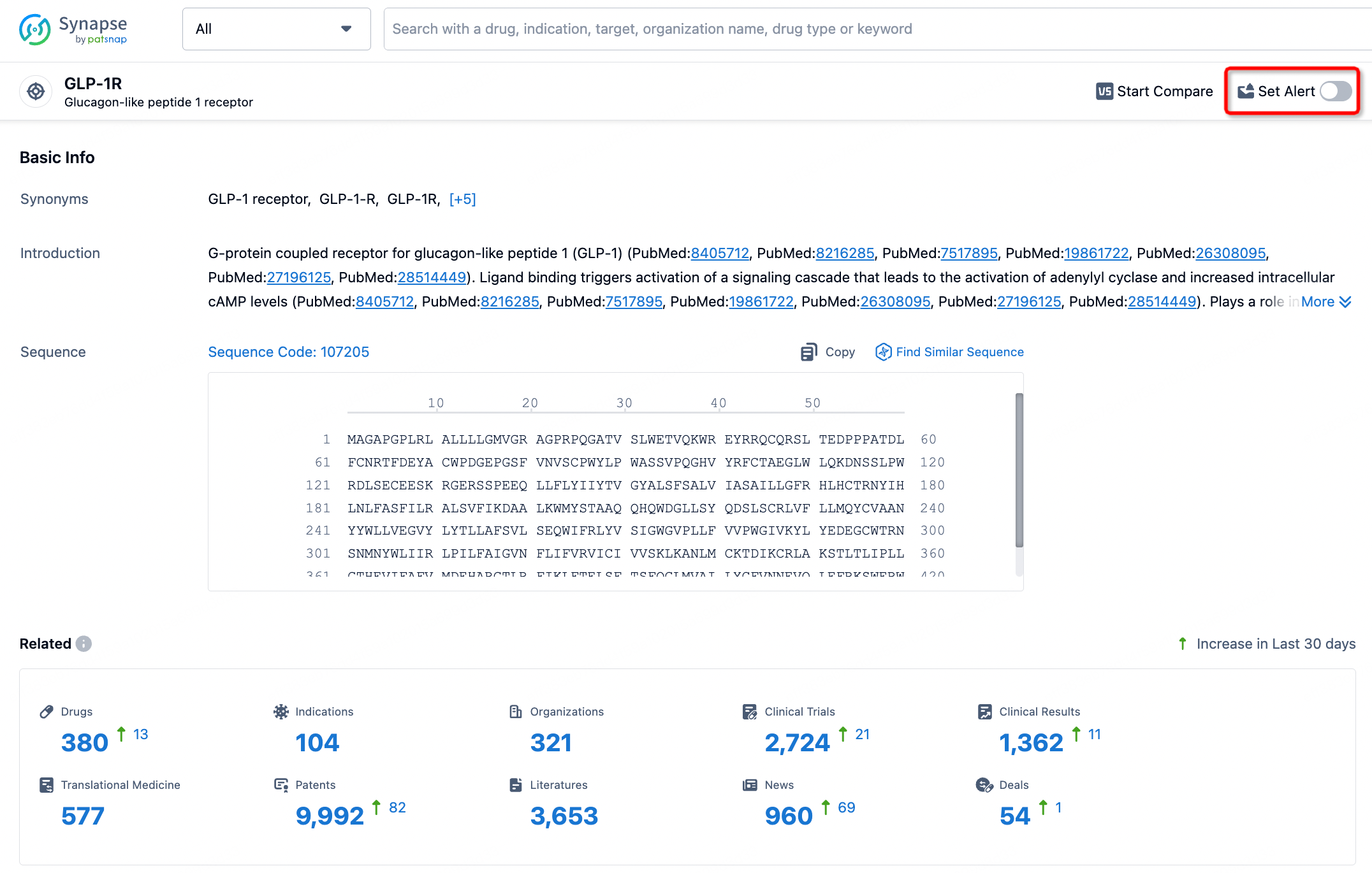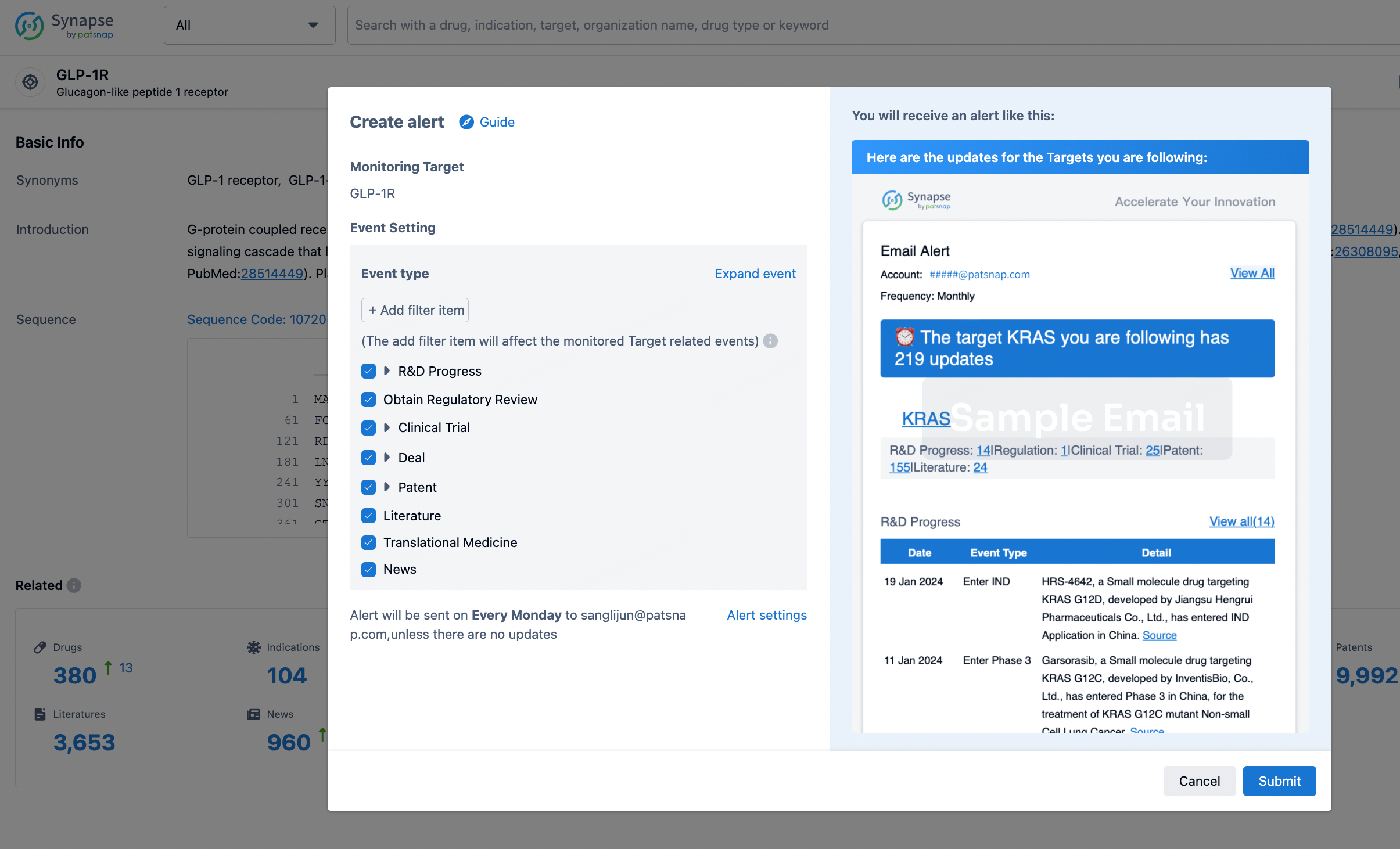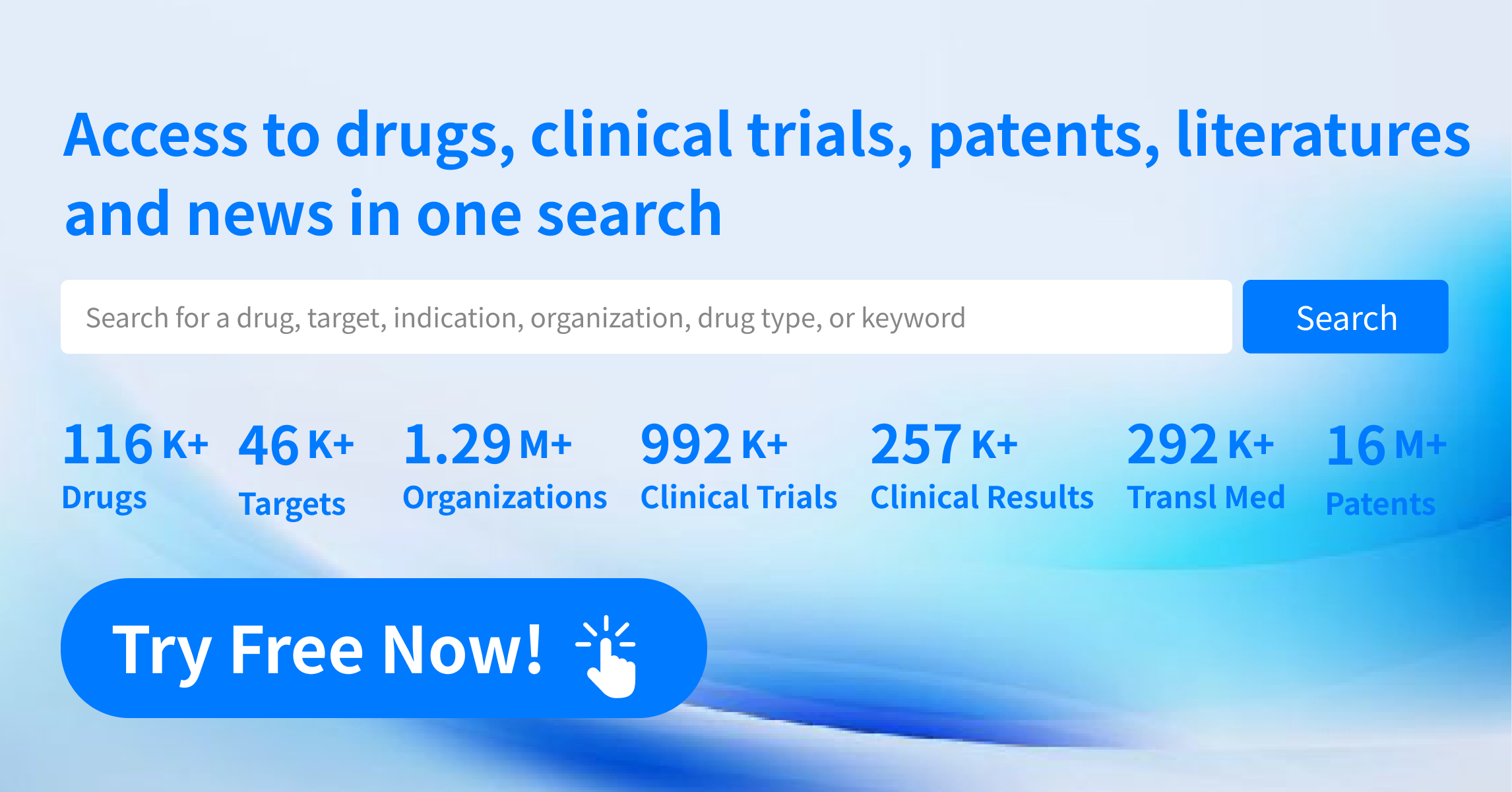Request Demo
What are EP4 antagonists and how do they work?
21 June 2024
EP4 antagonists are emerging as a promising class of therapeutic agents with potential applications in various medical fields. These compounds specifically target the EP4 receptor, one of the four receptor subtypes for prostaglandin E2 (PGE2). Prostaglandins are lipid compounds that have diverse biological functions, including involvement in inflammation, pain, and cancer progression. By inhibiting the EP4 receptor, these antagonists can modulate several physiological and pathological processes.
EP4 antagonists work by blocking the binding of PGE2 to the EP4 receptor. PGE2 is a potent inflammatory mediator, and its interaction with EP4 can lead to the activation of various signaling pathways within cells. These pathways are involved in the regulation of immune responses, cell proliferation, and pain perception. By obstructing this interaction, EP4 antagonists can effectively diminish the downstream effects of PGE2, thereby reducing inflammation, pain, and potentially thwarting tumor growth.
The mechanism of action of EP4 antagonists involves their selective binding to the EP4 receptor. This receptor is a G-protein coupled receptor (GPCR) that, when activated by PGE2, triggers a cascade of intracellular events, including the activation of adenylate cyclase, increased cyclic AMP (cAMP) production, and the subsequent activation of protein kinase A (PKA). These events can lead to various cellular responses, such as increased secretion of pro-inflammatory cytokines, cell migration, and survival. By preventing PGE2 from binding to the EP4 receptor, antagonists can block these signaling pathways, thereby exerting anti-inflammatory, analgesic, and anti-tumor effects.
One of the primary applications of EP4 antagonists is in the treatment of inflammatory diseases. Conditions such as rheumatoid arthritis, inflammatory bowel disease (IBD), and osteoarthritis are characterized by excessive inflammation driven, in part, by PGE2 signaling through the EP4 receptor. By inhibiting this pathway, EP4 antagonists can help reduce inflammation and alleviate symptoms associated with these diseases. For example, in rheumatoid arthritis, where joint inflammation leads to pain and swelling, EP4 antagonists could potentially offer a novel therapeutic approach to managing these symptoms more effectively than current treatments.
In addition to their role in inflammatory diseases, EP4 antagonists are being investigated for their potential in cancer therapy. PGE2 is known to promote tumor growth and metastasis through various mechanisms, including the suppression of immune responses against tumors and the promotion of angiogenesis (the formation of new blood vessels that supply the tumor with nutrients). By blocking the EP4 receptor, antagonists can inhibit these pro-tumorigenic effects of PGE2, thereby slowing down or even preventing the progression of certain cancers. Preclinical studies have shown promising results in using EP4 antagonists to reduce tumor growth and enhance the efficacy of existing cancer treatments.
Pain management is another area where EP4 antagonists show considerable promise. PGE2 is a well-known mediator of pain and hyperalgesia (increased sensitivity to pain). By blocking the EP4 receptor, these antagonists can reduce the perception of pain, offering a new avenue for treating chronic pain conditions, such as neuropathic pain and fibromyalgia. Unlike traditional nonsteroidal anti-inflammatory drugs (NSAIDs) that inhibit cyclooxygenase enzymes (COX-1 and COX-2) and have broad effects, EP4 antagonists provide a more targeted approach, potentially reducing the risk of side effects commonly associated with NSAIDs, such as gastrointestinal irritation and cardiovascular issues.
In summary, EP4 antagonists represent a novel and exciting category of drugs with vast therapeutic potential. By specifically targeting the EP4 receptor, these compounds can modulate the effects of PGE2, leading to reduced inflammation, pain, and tumor progression. As research continues, the clinical applications of EP4 antagonists are likely to expand, offering new hope for patients suffering from a range of inflammatory conditions, cancers, and chronic pain disorders. Their selective mechanism of action and potential to provide targeted therapy make them a significant focus of ongoing medical research and drug development.
EP4 antagonists work by blocking the binding of PGE2 to the EP4 receptor. PGE2 is a potent inflammatory mediator, and its interaction with EP4 can lead to the activation of various signaling pathways within cells. These pathways are involved in the regulation of immune responses, cell proliferation, and pain perception. By obstructing this interaction, EP4 antagonists can effectively diminish the downstream effects of PGE2, thereby reducing inflammation, pain, and potentially thwarting tumor growth.
The mechanism of action of EP4 antagonists involves their selective binding to the EP4 receptor. This receptor is a G-protein coupled receptor (GPCR) that, when activated by PGE2, triggers a cascade of intracellular events, including the activation of adenylate cyclase, increased cyclic AMP (cAMP) production, and the subsequent activation of protein kinase A (PKA). These events can lead to various cellular responses, such as increased secretion of pro-inflammatory cytokines, cell migration, and survival. By preventing PGE2 from binding to the EP4 receptor, antagonists can block these signaling pathways, thereby exerting anti-inflammatory, analgesic, and anti-tumor effects.
One of the primary applications of EP4 antagonists is in the treatment of inflammatory diseases. Conditions such as rheumatoid arthritis, inflammatory bowel disease (IBD), and osteoarthritis are characterized by excessive inflammation driven, in part, by PGE2 signaling through the EP4 receptor. By inhibiting this pathway, EP4 antagonists can help reduce inflammation and alleviate symptoms associated with these diseases. For example, in rheumatoid arthritis, where joint inflammation leads to pain and swelling, EP4 antagonists could potentially offer a novel therapeutic approach to managing these symptoms more effectively than current treatments.
In addition to their role in inflammatory diseases, EP4 antagonists are being investigated for their potential in cancer therapy. PGE2 is known to promote tumor growth and metastasis through various mechanisms, including the suppression of immune responses against tumors and the promotion of angiogenesis (the formation of new blood vessels that supply the tumor with nutrients). By blocking the EP4 receptor, antagonists can inhibit these pro-tumorigenic effects of PGE2, thereby slowing down or even preventing the progression of certain cancers. Preclinical studies have shown promising results in using EP4 antagonists to reduce tumor growth and enhance the efficacy of existing cancer treatments.
Pain management is another area where EP4 antagonists show considerable promise. PGE2 is a well-known mediator of pain and hyperalgesia (increased sensitivity to pain). By blocking the EP4 receptor, these antagonists can reduce the perception of pain, offering a new avenue for treating chronic pain conditions, such as neuropathic pain and fibromyalgia. Unlike traditional nonsteroidal anti-inflammatory drugs (NSAIDs) that inhibit cyclooxygenase enzymes (COX-1 and COX-2) and have broad effects, EP4 antagonists provide a more targeted approach, potentially reducing the risk of side effects commonly associated with NSAIDs, such as gastrointestinal irritation and cardiovascular issues.
In summary, EP4 antagonists represent a novel and exciting category of drugs with vast therapeutic potential. By specifically targeting the EP4 receptor, these compounds can modulate the effects of PGE2, leading to reduced inflammation, pain, and tumor progression. As research continues, the clinical applications of EP4 antagonists are likely to expand, offering new hope for patients suffering from a range of inflammatory conditions, cancers, and chronic pain disorders. Their selective mechanism of action and potential to provide targeted therapy make them a significant focus of ongoing medical research and drug development.
How to obtain the latest development progress of all targets?
In the Synapse database, you can stay updated on the latest research and development advances of all targets. This service is accessible anytime and anywhere, with updates available daily or weekly. Use the "Set Alert" function to stay informed. Click on the image below to embark on a brand new journey of drug discovery!
AI Agents Built for Biopharma Breakthroughs
Accelerate discovery. Empower decisions. Transform outcomes.
Get started for free today!
Accelerate Strategic R&D decision making with Synapse, PatSnap’s AI-powered Connected Innovation Intelligence Platform Built for Life Sciences Professionals.
Start your data trial now!
Synapse data is also accessible to external entities via APIs or data packages. Empower better decisions with the latest in pharmaceutical intelligence.


